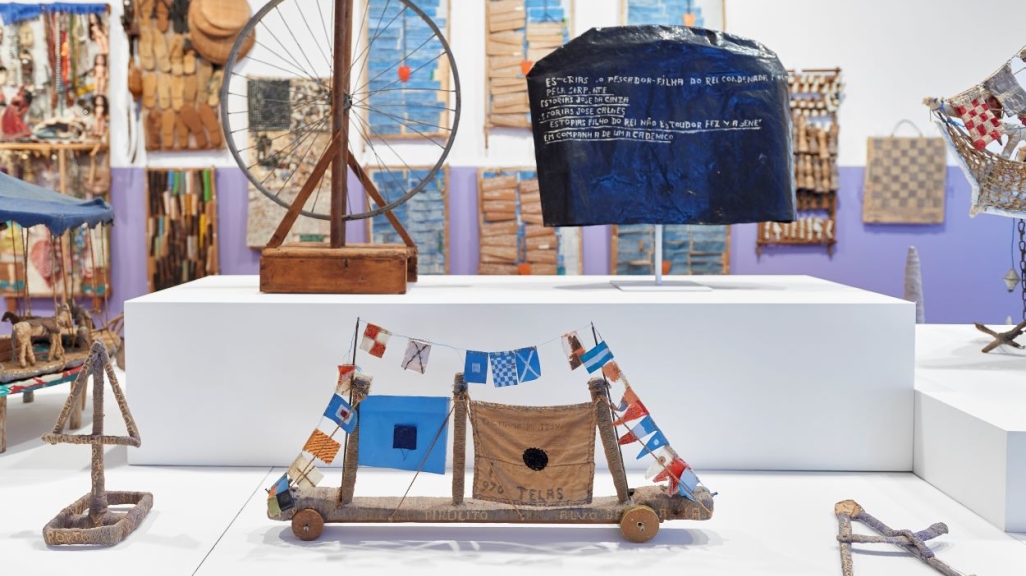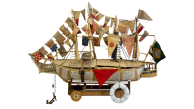E-flux Writes That AS Show Is "Marked by Generous Color Schemes and Complex Embroidery"
E-flux Writes That AS Show Is "Marked by Generous Color Schemes and Complex Embroidery"
The art publication reviewed Americas Society's Bispo do Rosario: All Existing Materials on Earth, on view through May 20.
A number of extravagant garments, marked by generous color schemes and complex embroidery, open the first of three luminous rooms in “All Existing Materials on Earth,” curated by Tie Jojima, Aimé Iglesias Lukin, Ricardo Resende, and Javier Téllez. Its central piece, Manto da apresentação [Annunciation Garment], catches the eye with a multiplicity of details, inscribed with colored threads against a light-brown ground: signs and drawings of objects, names, numbers, abbreviations, and streets of Brazilian cities, utensils, boats and a model of a large sailing ship.
A photographic portrait of the artist wearing his magnum opus reveals not a fashion designer but a Brazilian psychiatric patient. The descendant of Black slaves, Arthur Bispo do Rosario (1909/11–1989) spent forty-one years of his life in mental health institutions while accomplishing his “mission.” On the side of the short exhibition text, another mugshot-like portrait of the artist is displayed on the patient card from Colônia Juliano Moreira, the hospital where Bispo was interned. He is described as “indigent,” a wandering Black beggar bearing no documents. The card repeats the police record from December 1938, when Bispo was arrested in Rio de Janeiro and diagnosed with “paranoid schizophrenia.” It was the month of Bispo’s revelation: he started to hear voices and identified himself with Jesus Christ, or “Arthur Jesus,” who came on earth to judge the dead and the living.
Bispo produced a considerable body of work during his confinement, mostly using material he was able to gather in and around the asylum. Among other objects, he constructed fabric banners with complex embroideries, furniture, ships, and other assemblages, which would survive the apocalypse and ensure his redemption before God. The artist created sculptures composed of everyday items, like tapes, forks, knives, pieces of fabric, shoes—things which he could gather from his surroundings. One series of works, posthumously classified as “O.R.F.A.” and displayed in this exhibition, presents objects wrapped in blue threads, which the patient collected from hospital fabric, also called “mummified” or “embalmed” objects. In total, more than 800 objects were preserved after his death in 1989. As if responding to an inner catastrophe, Bispo balanced this turmoil by redesigning his environment, immersed in his constructions. […]
Art at Americas Society presented the first solo exhibition of the Afro-Brazilian artist in the United States.










